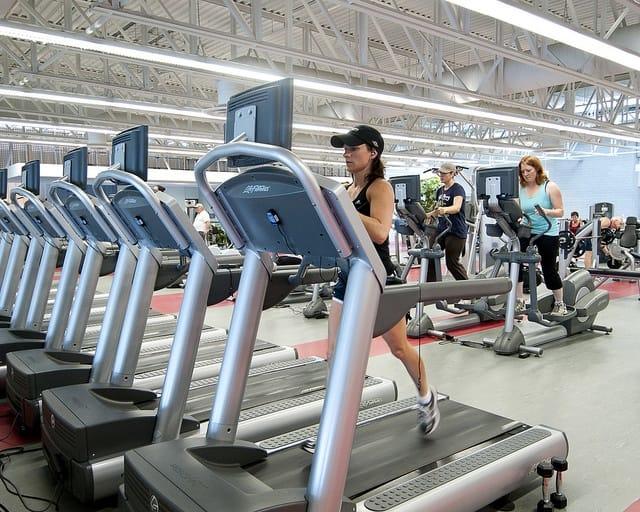Best Fitness Equipment for Community Centers
Choosing Trainers for YMCA, JCC & other Community Center Fitness Rooms
Community centers worldwide help millions of people exercise in safe neighborly settings. This article can help you plan a community center gym that engages members of all ages and ability levels, encouraging them to visit your center often and make lifelong habits of cardiovascular exercise and strength training.
Fitness as a Center of Community
Community centers with high quality workout rooms have an edge in motivating busy membership. While other opportunities at the center come and go, a fitness room is constant and attracts members who are motivated to return a few times every week. Exercisers are likely to take part in other opportunities at the center too and won’t want to let their memberships lapse!
To help you build a gym with wide appeal, here we provide general insights about choosing fitness equipment for community centers. For custom advice about all types of commercial fitness equipment please send an email to the TreadmillReviews.net team.
Meeting a Cross-Section of Fitness Needs and Preferences
Community center fitness rooms ideally cater to several generations of community from teenagers to elderly residents. Members are diverse in terms of height and weight, strength, sense of balance, exercise goals and more. Your primary task is to choose equipment that meets most people’s needs in the categories of cardio and strength training. Here are related tips to help you plan wisely.
1. Measure Your Room
Before serious gym planning can begin, you need to know the dimensions of your community center’s fitness room. How many cardio trainers will fit? How many strength trainers will fit? Will special layouts be needed for group exercise classes with spin bikes or other equipment?
You can experiment with room-planning tools on fitness equipment manufacturers’ websites.
If space is rather limited, you can focus on two types of machines designed especially for your challenge: compact fitness equipment such as compact treadmills and hybrid fitness equipment that supports multiple exercises. Vendors are of course happy to suggest fitness equipment and room layouts too.
2. Meet all Power Levels
Most commercial fitness equipment is suitable for beginners through advanced trainees. The lowest speeds and resistance levels are generally appropriate for people working on gentle physical rehabilitation too. To accommodate the most elite athletes in your community though, sometimes you’ll need to choose a top-of-the-line model.
An example from the commercial treadmill world involves the machines’ top speeds. The industry standard of 12 miles per hour exceeds most users’ needs, but the most serious runners might expect to see a marathon-quality treadmill in the equipment lineup.
3. Support Low-Strain Exercise
Treadmills continue to be the most popular cardio trainers at community centers. However, some exercisers need more TLC than an well-cushioned treadmill can provide. Here are a few examples.
- People with injuries or chronic pain need a cardio and strength training option that’s low impact or zero impact (i.e., gentle on joints).
- People with sore backs appreciate recumbent fitness machines with great lumbar support. Examples include low impact recumbent bikes and recumbent elliptical trainers.
- The best cardio machines for community centers are designed for easy access by people with limited mobility. For instance, an exercise bike can be designed with a “step through” design instead of having a bar between the user’s legs. A treadmill or elliptical trainer can be designed with an especially low step-up height for the comfort of people with sore knees.
4. Compare the Electronics
Electronics vary widely on commercial-grade fitness equipment. For many community centers it’s best to primarily select machines that have streamlined electronics (to avoid overwhelming certain members) yet feature a few digital perks for the benefit of tech-connected trainees. iPod connectivity and a simple ledge for a tablet computer or magazine can make a big difference to motivation.
Community centers with bigger budgets to spare might prefer investing mainly in cardio machines with luxury consoles. WiFi connections for TV, exclusive workout videos and access to the Internet are some of the perks on top options.
5. Choose Equipment with Safety Features
The best commercial cardio trainers for community centers have safety features. Here are three examples:
- A lanyard for treadmills, which shuts off the machine if the user slips
- A safety key that prevents children from activating cardio equipment
- Handrails for treadmills and exercise bikes
Many commercial treadmills are also programmed to stop their tracks after 20 seconds or so if the user steps away.
Get Customized Advice
It’s exciting to create new environments for community wellness. Feel free to contact us for help assessing your members’ needs, comparing commercial fitness products and otherwise planning a great community center gym.
Other Treadmill Reviews:
- Test HomePage
- NordicTrack Commercial X14i
- Echelon Stride
- NordicTrack C 590 Pro
- NordicTrack T 7.5 S - Pros & Cons (2024)
- Sole TD80 Treadmill Desk
- NordicTrack Commercial X11i
- NordicTrack T 8.5 S - Pros & Cons (2024)
- Horizon Elite T5
- Exerpeutic TF1000
- NordicTrack T 6.5 S - Pros & Cons (2024)
- ProForm Sport 5.0
- ProForm Premier 900
- ProForm ZT6
- NordicTrack FreeStride Trainer FS5i (Discontinued)
- Bowflex Max Trainer M5
- BowFlex TreadClimber TC100
- ProForm Power 795
- ProForm Sport 7.0
- NordicTrack Incline Trainer X15i
- NordicTrack C 1650 Treadmill
- Horizon Elite T9
- Official Boston Marathon Treadmill 4.0
- NordicTrack Treadmill Desk
- NordicTrack C 1630 Pro
- NordicTrack C 970 PRO
- Bowflex TC20 TreadClimber


